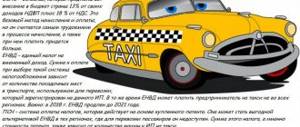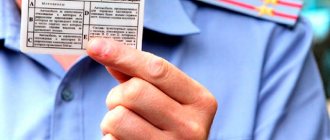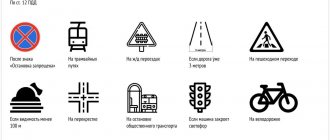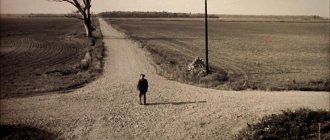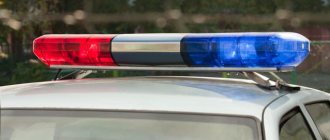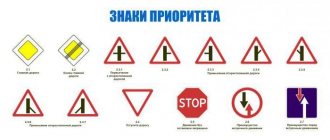Don't be rude
There is a certain Administrative Regulation, which was approved by the Ministry of Internal Affairs of Russia No. 664. It describes the principles according to which a traffic police officer should act when communicating with a driver. During the conversation, the inspector will behave politely, tactfully and show restraint and calm. The same is expected from the driver. The owner of the car must also address the employee as “you” and in every possible way refrain from rudeness and offensive statements addressed to the person during execution.
Such rules should be relevant for every driver. If the person driving believes that he has not violated anything and is confident in his justice, he must calmly explain that he is right to the employee, but in no case attack him with accusations. As practice shows, it will be much easier to resolve all disagreements in calm tones.
Requirements for a traffic police officer
In their activities, traffic police officers are required to be guided by Order No. 185 of the Ministry of Internal Affairs of Russia dated March 2, 2009, which approved regulations for monitoring the compliance of subjects with road safety requirements. Insulting a police representative while performing his duties entails bringing the culprit to justice within the framework of measures provided for by administrative and criminal codes:
- in case of minor consequences, a fine of 1,500 – 2,500 rubles or arrest for up to fifteen days is provided (Article 20.1 of the Code of Administrative Offenses of the Russian Federation);
- if they were of public importance, a fine of up to 40,000 rubles or compulsory labor of up to three hundred and sixty hours, as well as corrective labor for up to one year (Article 319 of the Criminal Code of the Russian Federation) are applied.
After stopping the driver in a vehicle, the traffic police inspector is obliged to approach the car immediately.
Introduce yourself, mentioning your special police rank, position held according to the staff list, last name and then say:
- for what reason was the moving car stopped, for what purpose was it stopped (requirements of clause 20);
- announce the name of the documents that are subject to verification or mandatory for performing procedural actions;
- if assistance is needed from the driver or people in the car in terms of presence for witnessing or use as a witness, speak about their rights, as well as the responsibilities that arise in this case (requirements of paragraphs 65-57).
At the first request of the driver, the traffic police inspector is obliged to speak correctly and show the police officer’s identification card in expanded form. To verify his identity and, if there are reasons to appeal his actions or the penalty imposed, give the address and telephone number of the traffic police duty department.
Don't demand
After stopping the vehicle, the inspector must introduce himself. To do this, the employee, when on duty, states his position, rank and last name from the very beginning. The inspector must show the ID and tell the driver why his vehicle was stopped. If the traffic police representative does not show his ID, the driver has the right to ask the employee to introduce himself and find out the reason for the delay. Every driver's request must be made tactfully.
It is important to remember that the person who is driving the car has the right to contact the officer with a request to explain in detail the reason for the stop, as well as to explain what laws the traffic police inspector is guided by. Administrative regulations require that the employee clearly answer the driver’s questions. If the owner of a car is arguing, it is best to communicate respectfully, focusing on the laws.
Stopping a car by a traffic police officer from the point of view of traffic rules
Clause 2.4 of the traffic rules gives traffic controllers the right to stop vehicles:
2.4. The right to stop vehicles is granted to traffic controllers, as well as:
- authorized officials of the Federal Service for Supervision of Transport in relation to stopping trucks and buses at transport control points specially designated by road sign 7.14;
- authorized officials of customs authorities in relation to stopping vehicles, including those not carrying out international transportation of goods, in customs control zones created along the state border of the Russian Federation, and if the curb weight of the specified vehicle is 3.5 tons or more, also in other territories of the Russian Federation, determined by the legislation of the Russian Federation on customs regulation, in places specially designated by road sign 7.14.1.
Authorized officials of the Federal Service for Supervision of Transport and Customs Authorities must wear uniforms and use a disk with a red signal or a reflector to stop a vehicle. To attract the attention of vehicle drivers, these authorized officials may use a whistle signal.
Persons who have the right to stop a vehicle are required to present an official identification card upon the driver’s request.
Those. Traffic police can stop cars .
In addition, transport supervision and customs officers can stop the car. However, they can only do this at special control points.
The concept of traffic controller is regulated by paragraph 1.2 of the rules:
“Traffic controller” is a person vested with the authority to regulate traffic using the signals established by the Rules in accordance with the established procedure, and who directly carries out the said regulation. The traffic controller must be in uniform and (or) have a distinctive sign and equipment. Traffic controllers include police officers and military motor vehicle inspectors, as well as employees of road maintenance services, those on duty at railway crossings and ferry crossings in the performance of their official duties. Regulators also include authorized persons from among employees of transport security departments who perform duties for inspection, additional inspection, re-inspection, observation and (or) interview in order to ensure transport safety, in relation to traffic regulation on sections of highways determined by the Decree of the Government of the Russian Federation. Federation dated July 18, 2021 No. 686 “On identifying sections of roads, railways and inland waterways, heliports, landing sites, as well as other buildings, structures, devices and equipment that ensure the functioning of the transport complex, which are objects of transport infrastructure.”
Those. Cars can be stopped not only by traffic police officers (police officers), but also by road workers, railway crossing and ferry crossing workers, and transport security officers.
Don't forget your rights and responsibilities
Many drivers begin to argue with traffic police inspectors due to the fact that they do not know enough traffic rules and the Code of Administrative Offenses “On Road Safety.” Before you get behind the wheel, it is important to study the rules of the road well and never break them. Additionally, it is recommended to learn the rules of communication with traffic police officers. For example, when an inspector stops a car, there is no need to immediately get out of the car; it is enough to wait until the traffic cop himself approaches you.
But there are exceptions, according to which it can be dangerous for an employee to be on the roadway and approach the car; in this case, he can address the driver from the opposite side of the car. For example, a traffic cop may ask you to move the car to another location. The main task of the driver in this case is to remain calm and not get irritated over trifles. It is also worth paying attention to the transfer of documents. When transferring documents, you should ensure in advance that they are without covers and unnecessary items. If these rules are followed, then no conflicts or incomprehensible situations will arise.
The driver's procedure when stopping the car
The driver's procedure when stopping the car
What procedure should a driver follow when a car is stopped by a traffic police officer? This question plagues a considerable number of motorists who are often stopped under the pretext of checking documents, special operations, orientations, etc.
How do motorists usually act when their car is stopped?
Someone immediately after stopping the car rushes to meet a traffic police officer, preferring the most conflict-free way of communication. Other motorists prefer to stay in the car and ask the traffic police officer to comply with all the provisions prescribed for him in the Law “On Police” and the regulations.
What course of action a driver should take when his car is stopped by a traffic police officer will be up to everyone to decide for themselves. Today we will just “put our two cents in the box” to discuss the procedure for a driver to competently protect his rights when communicating with a traffic police officer immediately after stopping the car.
What procedure can a driver follow when stopping his car?
First of all, the actions of a motorist depend on whether the traffic police officer stopped him at a stationary checkpoint or not (just on the road, not a stationary checkpoint). As is known by law (Administrative Regulations dated March 2, 2009, No. 185), stopping a car to check documents is possible “only at stationary traffic police posts.” This is exactly what is written word for word in the regulations (for checking documents “only at stationary posts”)
The traffic police officer must comply with the requirements of this legal act. He cannot deviate from this requirement and stop cars to check documents outside a stationary traffic police post, no matter how useful his motives are. No one should violate the law. But the road to a bad place is paved with good intentions.
For example, a driver who overloaded will not be released from liability by a traffic police officer only for the reason that he was carrying food for children or some other useful product. Such a driver will most likely be brought to administrative responsibility under the Code of Administrative Offenses of the Russian Federation.
Why then can a traffic police officer refer to a violation of paragraph 63 of the regulations due to the fight against drivers driving cars without a driver’s license or being deprived of a driver’s license?
What to do if a traffic police inspector stops a car outside a stationary checkpoint and says “check documents”?
In theory, in such a situation, the motorist has no obligation to hand over his driver’s license (and other documents) to the traffic police officer for verification. Indeed, in this case, the initial, as well as all subsequent, actions of the police officer are illegal.
Naturally, you cannot refuse to hand over documents to the traffic police inspector. Indeed, in this case, they may try (most likely, this will be done) to bring to justice under Part 1 of Article 19.3 of the Code of Administrative Offenses of the Russian Federation (disobedience to the legal requirement of a police officer).
It's better to do things differently. You just need to check with the inspector whether there are other grounds for stopping the car, and then have a conversation with him on the topic “stopping to check documents should only be carried out at stationary traffic police posts.” When communicating with a traffic police officer, you can also:
- let him read paragraph 63 of the Administrative Regulations dated March 2, 2009, No. 185;
— ask whether he fulfills the requirements of the regulations, whether he is guided by them in his activities;
- take other actions during which it becomes obvious to the inspector himself that he is wrong.
If, despite all the explanations from the driver, the traffic police officer demands that he be given a driver’s license and other documents (for example, citing traffic regulations, internal instructions, the need to combat violators, etc.), then there is another option for protecting your rights from illegally stopping a vehicle and checking documents outside a stationary traffic police post.
If time and the situation permit, you can file a complaint about the actions of the traffic police officer by calling the helpline, 02 (112) or to the duty station. Another additional option for protecting your rights in such a situation is to call the traffic police officer to the scene of the conflict.
By calling or calling the traffic police officer, the motorist seems to be calling for help from a third party (more or less independent). After all, it is useless to talk further with the traffic police officer who stopped the car. He turned deaf to the driver's arguments.
This third-party official (responsible, duty officer, etc.) needs to clearly explain the situation and ask to resolve the conflict with the inspector. The essence of the driver’s demands will be that he be allowed to continue driving without presenting a driver’s license and other documents due to the initial illegality of the actions of the traffic police officer (illegal stop of the vehicle outside a stationary traffic police post to check documents).
If the driver does not have the opportunity to call on a third party for help (for example, the helpline does not answer, they did not listen to him, etc.), and the traffic police officer demands that the driver’s license be immediately handed over to him for verification, while threatening to be held accountable under the law. 1 Article 19.3 of the Code of Administrative Offenses of the Russian Federation for refusal to comply with his demand, then you should obey.
Otherwise, the driver may be held accountable under Part 1 of Art. 19.3 Code of Administrative Offenses of the Russian Federation. Then you will be tortured through the courts to “swallow dust”, proving that the actions of the traffic police officer were illegal, and you did not refuse to give him a driver’s license, but only wanted to find out whether the grounds for stopping the car were legal. And then it turns out that some kind of special operation was taking place and a traffic police officer allegedly stopped your car for precisely this reason, etc.
Before handing over a driver’s license to the person in “form”, the motorist must make sure that it is really a policeman in front of him.
It is very easy to verify this, since the law and regulations oblige the traffic police inspector to introduce himself when initially contacting the driver, state the reason and grounds for stopping the car, as well as the rights and obligations that arise for the motorist (related to the restriction of his right to free movement on roads of the country and a forced stop at the request of a police officer).
Naturally, you shouldn’t just believe the words of a person in “uniform” that he is an active traffic police officer. He doesn’t take your word for it that you have all the documents with you and are in order?
You too can check his words. The law obliges the traffic police officer to present you with an official identification card for review upon request. There is no need to be ashamed of this. After all, the inspector himself is not shy about asking you for your driver’s license? Why can't you ask a policeman to show you his ID?
Thus, at the time of handing over your driver’s license to the traffic police inspector, you must have reliable information (confirmed by the service ID shown) about:
— who exactly stopped you (full name, position, rank);
— whether this is a current traffic police officer (when reviewing the service ID, we look at its validity period);
— what is the reason for stopping the car (in this case, we are considering the issue of stopping the car due to a document check);
— what rights and obligations do you have in connection with the car being stopped (restriction of the right to travel on the country’s roads).
Further communication with the traffic police officer depends on the specific situation. For example, if a motorist is accused of violating the Traffic Rules, then he immediately has new rights provided for in Article 25.1 of the Code of Administrative Offenses of the Russian Federation and Article 51 of the Constitution of the Russian Federation.
If the traffic police officer does not accuse the motorist of committing a violation, then he must release him immediately after the goal of the action in connection with which the driver was stopped is achieved. For example, if we are talking about checking documents and they are in order, then he should be released immediately.
Taking this into account, if the stopped driver sees that the inspector has checked the documents and does nothing further, but at the same time does not let him go, then you need to find out under what procedure (at the moment, after checking the documents) the driver’s right to free movement is limited on the roads of the country. That is, the driver needs to ask if he can go further. If not, then for what specific reason and what actions will be taken in the future by the traffic police officer.
Depending on the response of the traffic police officer, the further actions of the motorist will depend.
Don't make excuses
Often the driver does not agree with the offenses that are attributed to him. In this case, the car owner begins to make excuses, thereby showing that he is not guilty. But it is important to remember that the best proof of innocence is the law. Video footage of the offense can be used as evidence. Today, there are many gadgets that have a video recording function.
The traffic police officer must prove that the driver is guilty, so the driver can simply say that he will not admit his guilt and will not incriminate himself. If a protocol is drawn up, the offense is described and all rights and obligations are explained. The protocol indicates the time and place of the offense; it is worth paying attention to the date, position and surname of the employee who compiled the document. The protocol may indicate its own evidence and arguments that will indicate that the driver is right.
The owner of the car will be required to indicate in the protocol a phrase such as “I do not agree with the violation. I didn’t violate any traffic rules.” It is very important to ensure that traffic police officers use the term “driver” and not “violator” in the protocol.
Behavior when drawing up a protocol
Most conflicts between inspectors and drivers arise during the process of drawing up a protocol. Sometimes it is difficult for drivers to understand the situation, and there is also a risk of traffic police officers exceeding their authority. It is important to maintain polite communication with the inspector without violating your own rights.
If a traffic police officer accuses a driver of committing any offenses, but cannot provide clear evidence, you should not agree with the inspector. According to the provision on the presumption of innocence, without proof of an offense, drawing up a protocol is inappropriate.
In case of any violations, the inspector is obliged to provide the driver with evidence of his guilt, including a video recording, indicators of special technical means or eyewitness accounts. The offense is considered unproven even if the driver cannot confirm his innocence, since the presentation of evidence rests entirely with the traffic police officers.
Sometimes, when drawing up a protocol, inspectors invite drivers into a service vehicle or offer to follow the picket line. A person has the right to refuse this, since the obligation to comply with these requirements of the inspector is not assigned to the driver. Placement in a company car without taking into account the driver’s opinion is possible only when a person is detained legally in accordance with Art. 27.3 Code of Administrative Offences.
When filling out the protocol, it is necessary to ensure that all fields are formatted in accordance with legal requirements and that true information is not distorted:
- The protocol must state the essence of the offense and provide links to evidence of the driver’s guilt. If you wish, you can indicate your point of view when considering a certain situation in the appropriate column. You can sign the protocol only if the driver fully admits his guilt and also agrees with every word written by the inspector.
- If conflicts and misunderstandings arise, or a traffic police officer refuses to rewrite the protocol, if it contains information that is incorrect, in the driver’s opinion, in the appropriate column you should indicate: “I do not agree. I need a lawyer." This way you can increase your chances of winning when appealing the protocol in court.
- You cannot leave the place where the vehicle was stopped until a copy of the protocol is issued to the driver. It is advisable to leave the inscription “I require legal assistance” in the copy that remains with the traffic police officer. This way you can notify about your right to resolve controversial issues with the participation of a lawyer, and influence the cancellation of the inspector’s decision when considering the issue in court.
- If witnesses to the incident were not interviewed, a dash should be placed in the appropriate column. Important fields should not be left blank to avoid the risk of introducing witness statements by persons attracted by the traffic police officer without the knowledge of the driver.
It is necessary to follow the rules of communication with the traffic police inspector, but do not succumb to provocations. Before a court decision is made, it can be assumed that the protocol contains violations of the provisions of the Code of Administrative Offenses, which is why the driver has the right to legally prove his innocence and refute unfounded accusations.
Protocol for speeding
When drawing up the appropriate protocol, it is necessary to pay attention to the radar indicators. It is important to clarify that the device shows the speed of a particular vehicle immediately before it stops. If the inspector presents a device that displays numbers that do not correspond to the speed of the car, drawing up a protocol is unlawful; it is necessary to challenge the actions of the traffic police officer in court.
Protocol for unreadable numbers
If you drive a car in violation of legal requirements for the condition of license plates, you may be issued a warning or a fine of 500 rubles. If the reason for stopping the vehicle is dirty license plates, it is advisable not to argue with the traffic police officer, but to wipe the signs with a damp cloth. If the inspector insists on drawing up a protocol, it is advisable to photograph the license plates, confirming their readability.
In some cases, inspectors try to equate driving with unreadable license plates to driving without registration plates. This action is illegal, since contamination can be eliminated on site. If the inspector draws up a protocol, and there are not enough grounds to find the driver guilty, you must express your disagreement with the information specified in the document. In court, it is advisable to provide photo or video evidence of the driver’s innocence.
Protocol for not wearing a seat belt
Often, traffic police officers stop a car, but cannot clearly indicate the reason or name the offenses committed by the driver. If a person managed to refute his guilt, the grounds used by the inspector to stop the vehicle were not confirmed, the traffic police officer may refer to an unfastened seat belt. In this case, you must indicate your awareness of the ban on traveling without a rubber seat belt. It is important to clarify that the driver removed the belt immediately after stopping the car.
Don't be unfounded
Arguing with the inspector and not having any facts will be an extremely wrong decision. It is advisable to always confirm your position by referring to generally accepted norms. If the driver knows the laws very well, then it will be difficult for the traffic police officer to argue with him.
For example, if the owner of a car was stopped while driving and accused of not wearing a seat belt, you could ask the inspector to provide photographs that would show this. If there is no such evidence, then you can refer to Art. 12.6 of the Code of Administrative Offenses of the Russian Federation, which states that the driver must be buckled up only while driving. After stopping, the driver can unfasten his seat belt to get documents, and he cannot be fined for this.
Most motorists install DVRs in their cars. This technique allows you to film everything that happens in the cabin and beyond. Therefore, with such a device it turns out to be much easier to prove that you are right. Various situations may arise on the road, so the best thing to do when stopping the car is to explain to the inspector how everything really happened.
Every motorist must have legal literacy. This will help resolve many controversial issues, based on obvious facts, and for this there is no need to make any unfounded announcements. When communicating with a person, you should not be guided by emotions; first of all, politeness and legal norms will come to the rescue.
The most important innovations
Finally, there is a rule that does not oblige you to present a paper OSAGO policy for verification! Alternatively, a printed copy of this document is sufficient.
In addition to the policy, the inspector may ask for a driver’s license, which the car owner MUST submit for inspection without “retaining devices” and a cover. At the same time, the “deputy agent” cannot seize this document, nor can he remove the license plates from the car.
Dear OSAGO? Restore KBM now
and stop overpaying insurers!
The service will send an application to RSA. Recovery time for KBM: from 12 hours. Find out more
Drivers and inspectors were required to communicate respectfully on the road, not allowing their words and actions to be discriminatory based on gender, age, race, nationality, language, political or religious preferences.
The rules for passing an alcohol intoxication test have been clarified. If the driver passes it and turns out to be sober, traffic police officers are obliged to return the car owner to the place where the car was stopped.
The traffic police is authorized, in order to identify offenders on the road, to use not only its own CCTV cameras, but any special technical equipment owned by private individuals.
Passengers in the car may also be subject to document checks.
The inspector’s actions can be appealed pre-trial, so there will be no more complaints from drivers about the delay in the process of drawing up protocols and other materials.
Drivers have the right to receive notification from government agencies via SMS about when their accident case will be reviewed.
When supervising traffic, the inspector must position his patrol car so that it is clearly visible to drivers and pedestrians.
In what situations can a driver be legally asked to leave the vehicle?
Rules for using the disabled sign on a car
When considering the rights and responsibilities of traffic police officers, it is necessary to pay attention to the situation when a police officer asks the driver to leave his car. If this request is not supported by legislative justification, then the actions of the inspector are a direct violation of civil rights
The law provides for only a few circumstances that allow a traffic inspector to require a car owner to get out of the car.
These include:
- Failure to comply with cargo transportation rules or the need to make minor vehicle repairs;
- There are reasonable grounds to believe that the person driving the vehicle is intoxicated;
- In order to carry out the reconciliation procedure and enter relevant information into the registration papers;
- For the purpose of carrying out the inspection procedure of the vehicle and the cargo contained in it;
- The car owner or passengers are suspected of committing illegal actions;
- Other situations requiring the direct participation of the driver (providing assistance to another car owner, filling out papers, etc.).
In other words, if a traffic police officer stops a car and asks the driver to leave his vehicle, then the decision to fulfill this request is made solely by the car owner, with the exception of the situations listed above.
Responsibilities of a traffic police officer after stopping a car
According to the new regulations, an inspector, having stopped a vehicle (regardless of the reason for the stop), is required to perform a number of actions:
- Approach the car - not “waddle”, but without delay.
- Say hello to the driver and introduce yourself, giving your full name, special title and position.
- “Salute” by placing your right hand on your headdress.
- Tell him why he stopped you. Often the inspector, in response to a perplexed question from the driver, answers: “What do you think?” In this case, it is worth politely reminding him that explaining the reason for the stop is his responsibility, not yours.
- When making a traffic police stop, a driver’s inalienable right is to demand an employee’s identification card. You can not only review the inspector’s data, but also record it for yourself.
After completing all of the above steps, the inspector may ask the motorist to present documents.
○ Deadlines for appealing protocols.
You have 10 days to petition for the invalidity of the drawn up protocol. You can do this by contacting the head of the traffic police department in which the employee carries out his activities or the magistrate’s court at the place where the protocol is filled out.
Thus, the outcome of the meeting with the inspector largely depends on the correctness of your actions. If you know your rights, remain calm and confident, you can conduct a dialogue with a traffic police officer as productively as possible.
Reasons for stopping
A traffic police officer may stop you for the following reasons:
- violation of traffic rules;
- presence of evidence that the driver or passengers are involved in the commission of any crime;
- if the inspector has an indication that a similar car is stolen or is wanted;
- to ask the driver and passengers to testify about an accident they previously witnessed, or to act as witnesses;
- the least pleasant reason for a motorist is that the inspector needs to use the car, for example, to chase a violator;
- on a specific section of the road it is necessary to temporarily block traffic;
- provide free passage to special service vehicles;
- to ask for help for him or those involved in the accident;
- during any scheduled inspections and special events ("sober driver" campaign, transportation of wanted persons, etc.).
Sometimes the inspector is forced to stop the driver’s movement for his own safety - if along the way the roadway collapses, a tree falls on the highway, a serious accident occurs that blocks traffic, or another emergency situation occurs.

